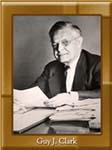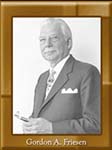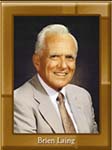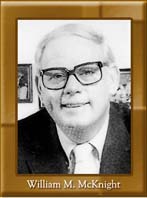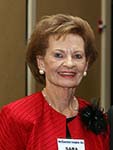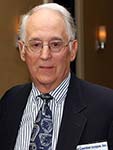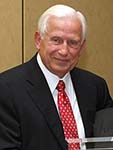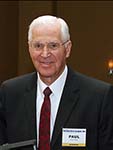
Paul B. Powell, (1927-2020)
With more than a decade of purchasing and operations experience in the airline industry in the 1960s and 1970s, Paul Powell became one of the first major proponents of implementing industrial procurement practices in healthcare organizations. As director of purchasing at United Air Lines and then vice president of operations for InFlight Services Inc., the firm responsible for broadcasting major films during flights, Powell oversaw the procurement, management and distribution of supplies, food, equipment and services, facilitated by computerization and keen negotiating skills. Joining American Medical Inc., which quickly was acquired by Humana Inc., in 1974 as senior vice president of material management, Powell helped make Humana a leader in contract terms and pricing, significantly pushing for product standardization throughout the entire Humana system and emphasizing collaboration between providers and suppliers. Powell also helped to pioneer electronic catalogs and computerized purchasing data management. His philosophies on supply data management and supplier relationships are common practice today.
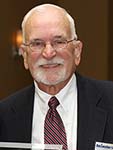
Samuel G. Raudenbush, (1931-2016)
Sam Raudenbush dedicated himself professionally to supply chain management, steadily rising through the ranks in purchasing to a senior-level support services position three decades later. Raudenbush was an early adopter of vendor partnerships between providers and suppliers and a pioneering leader in expanding materials management to a support services role responsible for such areas as biomedical engineering, maintenance, power plant, central service, patient transportation and operating room. He was one of the first hospital executives to plant a supply chain professional in the operating room in the 1980s to manage inventory and relationships with surgeons and nurses, as well as a proponent and implementer of exchange carts, OR replenishment systems and low-unit-of-measure distribution. Raudenbush also was a staunch supporter of electronic data interchange (EDI), serving as an early advocate of Johnson & Johnson Health Care System’s COACT program. Raudenbush was known for mentoring scores of supply chain professionals who went on to advance their careers, something he considers one of his proudest achievements. He served as AHRMM president in 1988, where he helped to fortify regional educational seminars, improve chapter recognition and institute Board-Elect positions for more effective policy continuity, earning the association’s George Gossett Leadership Award in 1990.


